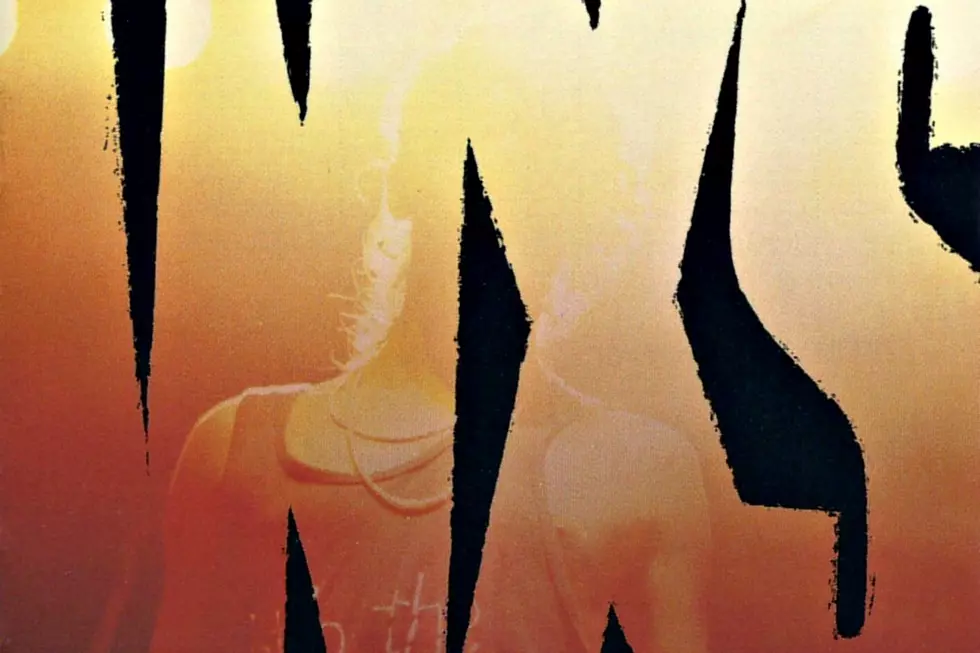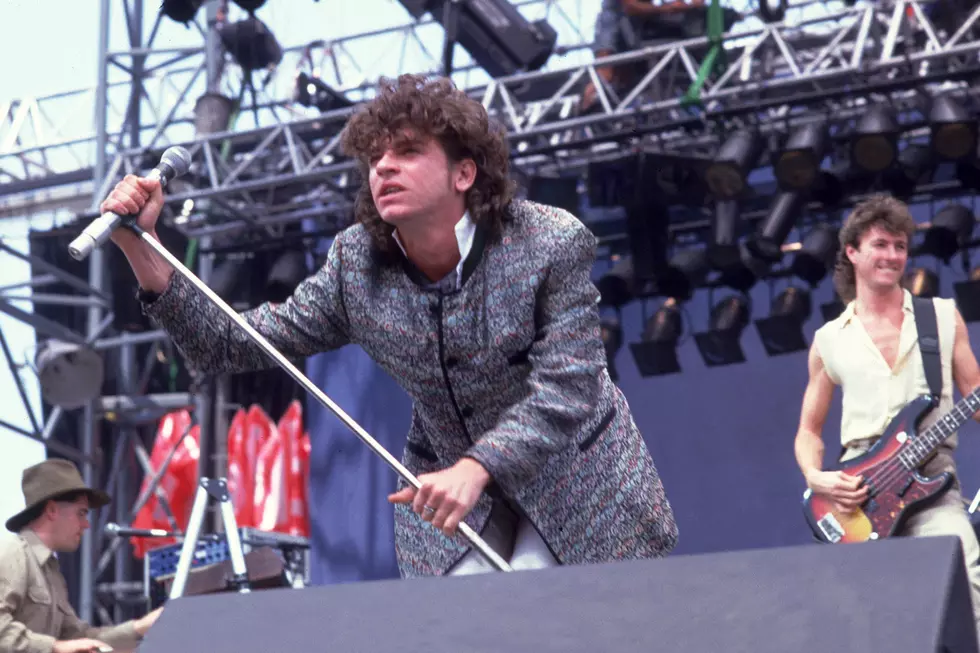
How INXS Broke Through With ‘Listen Like Thieves’
With their fifth studio album, INXS taught the world how to Listen Like Thieves — and started their own massive multi-platinum breakthrough along the way.
Although the band's first four records resonated most strongly in their native Australia, INXS wasn't entirely unknown to U.S. audiences; they'd notched a couple of rock hits with singles from 1982's Shabooh Shoobah, and its follow-up, 1984's The Swing, reached similarly middling heights just outside the Top 40 of Billboard's albums chart. But each album had sold better than its predecessor to that point, and the band members — as well as their relentlessly savvy manager Chris Murphy — were determined to conquer the rest of the world.
With that in mind, INXS doubled down on the radio-ready approach they'd adopted for The Swing, which featured production from Nile Rodgers and a vocal cameo from Daryl Hall. Seeking a producer who'd help them distill their well-honed stage presence onto tape while driving them to deliver their best material, they enlisted Chris Thomas, an industry veteran who'd compiled a long list of impressive credits well before entering INXS' orbit.
Thomas, in fact, studied under George Martin during the legendary producer's Beatles years, even contributing keyboards to the White Album. After striking out on his own, Thomas had a hand in mixing Pink Floyd’s The Dark Side of the Moon before producing albums for Brian Eno and Roxy Music; from there, he ended up behind the boards for the Sex Pistols’ Never Mind the Bollocks ... album and the Pretenders' Learning to Crawl.
He was, in short, a guy who knew his way around a studio as well as how to manage artists' egos, and after taking in an INXS concert, he pinpointed the live energy missing from the band's previous efforts. Continuing their slow drift away from the New Wave sound of their early LPs, Thomas upped their sound's rock quotient with Listen Like Thieves while making room for their fondness for funk — and surrounding the whole thing with modern '80s polish. The result was a record that managed to be utterly of the moment without sacrificing essential components of the band's musical identity.
Watch INXS' Perform 'What You Need'
Thomas was also unforgivingly honest when it came to the commercial potential of the songs INXS had written for the album, which came out on Oct. 14, 1985. With 10 tracks in the can, many written by the emerging songwriting duo of singer Michael Hutchence and multi-instrumentalist Andrew Farriss, he told the band they were still one crucial cut shy of the record they needed to make. "Chris Thomas told us there was still no 'hit,'" Farriss later recalled. "We left the studio that night knowing we had one day left and we had to deliver a 'hit.' Talk about pressure."
Under the gun, Farris and Hutchence combed through some of Farriss' demos, and were quickly directed by their producer to focus on one particular track, dubbed "Funk Song No. 13." "It was great. I thought, 'I could listen to that groove for 10 minutes!' I said, 'Let's work with that groove,'" Thomas said. "So, we went with that and in just two days it turned into the song that eventually broke them, 'What You Need.'"
"What You Need" proved to be exactly the song Thomas and the band were looking for. Released as the second single from Listen Like Thieves, it gave INXS their first Top 5 hit in the U.S., propelled by the groove that jumped out of Farriss' demo — and, as was often the case in the mid-'80s, by a distinctive video perfect for heavy rotation. The song paved the way for even bigger things to come, but the irony of its rapid creation was never lost on Farriss.
"The band's performance on that track is amazing. We absolutely nailed it. But it is amazing that often the simplest songs – unbelievably simple songs – that take you the shortest time and just happen, are the ones that become the huge hits," he noted. "But you can spend weeks writing a masterpiece and everyone can think it's crap!"
Listen to INXS' 'Listen Like Thieves'
After nearly a decade in the trenches, INXS finally scored the breakout hit they'd been reaching for with "What You Need," and that was really just the very beginning of a period of massive worldwide success that would reach its apogee with their next record, 1987's Kick. Yet well before that album started its long chart reign, the band members knew nothing would be the same — not in terms of their professional obligations, which threatened to engulf their lives after they'd already devoted years to non-stop touring and recording, and more importantly, not in terms of the group's songwriting dynamic, which was shifting away from their earlier democratic approach and toward a far heavier focus on Hutchence and Farriss' contributions.
The floodgates of fame they opened with Listen Like Thieves would eventually unleash a torrent of unforeseen changes, and the band members — particularly Hutchence — would deal with their celebrity with varying degrees of success. For Farriss, the increased heat of the spotlight after Listen Like Thieves proved a quick lesson in being careful what one wishes for; as he later reflected in the official band memoir INXS: Story to Story: The Official Autobiography, it didn't take him long to realize his creative path might have taken an uncomfortable turn.
"It took me a while to figure out why I wasn’t happy about it," he admitted. "The thing was, if you’re at No. 5, you can still go up to No. 1 and that’s something to look forward to. But after that the only direction you can go is down. And in order for us to do better than No. 5, we would have to write a song as good, if not better than, ‘What You Need.’ It struck me that in achieving your goals you’re also losing something. It had felt like our career had been a game of cat and mouse, and suddenly we were catching the mouse. Or was the cat catching us?"
Meet the New Boss: Rock's Replacement Singers
More From Ultimate Classic Rock









